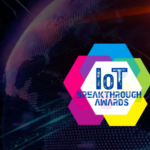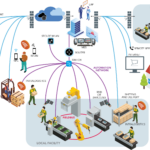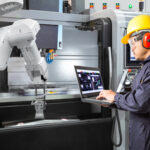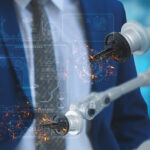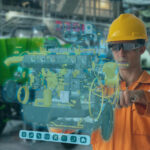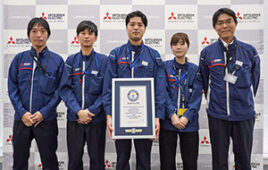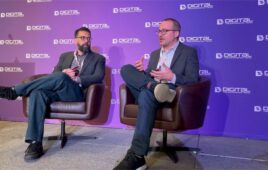In the first part of this Design World Trends series, we heard from industry experts about discrete automation’s edge devices; efforts to promote standards for increased system compatibilities and interoperabilities; and the rise of fog computing as well as industrial uses for wireless technologies such as 5G. In this follow-up piece, we detail the holistic approaches needed for an operation to realize a digital transformation.
MEET THE EXPERTS
Sandro Quintero | Business development for electric automation • Festo
Will Morris | Category manager • RS Americas Inc.
Paul Thompson | V.P. solutions engineering • Matterport
Chris Gottlieb | Director — Drives and controls • Kollmorgen
Bill Paczkowski | Senior product manager for PACEdge • Emerson
Craig Scott | CEO and president • MFGx
Boaz Eidelberg | CTO • SAAR Inc.
Pramit Nandy | Product marketing manager — 16-bit microcontroller division • Microchip Technology
JP Wollersheim | Senior director of product management • Matterport
A digital transformation (DX or DT) is the application of software, programmable hardware, and operational technologies (OTs) to fundamentally transfigure a company’s operations and end products for the better. DX programs can be undertaken by industrial organizations, machine builders, or a vast array of other businesses; the involved OTs typically include machine-monitoring systems, connectivity, and online web and cloud access — especially via tools with internet of things, IIoT, or Industrie 4.0 functionalities.
What new capabilities do your designs incorporate to support functions related to fog computing?
Paczkowski: Fog computing includes data handling, storing, and processing on a local network at a site. Although edge devices such as sensors and PLCs are becoming more capable (and enterprise or cloud-based resources have enormous capabilities) onsite fog computing lets users efficiently operate with large amounts of data in a stable, low-latency, and secure manner.
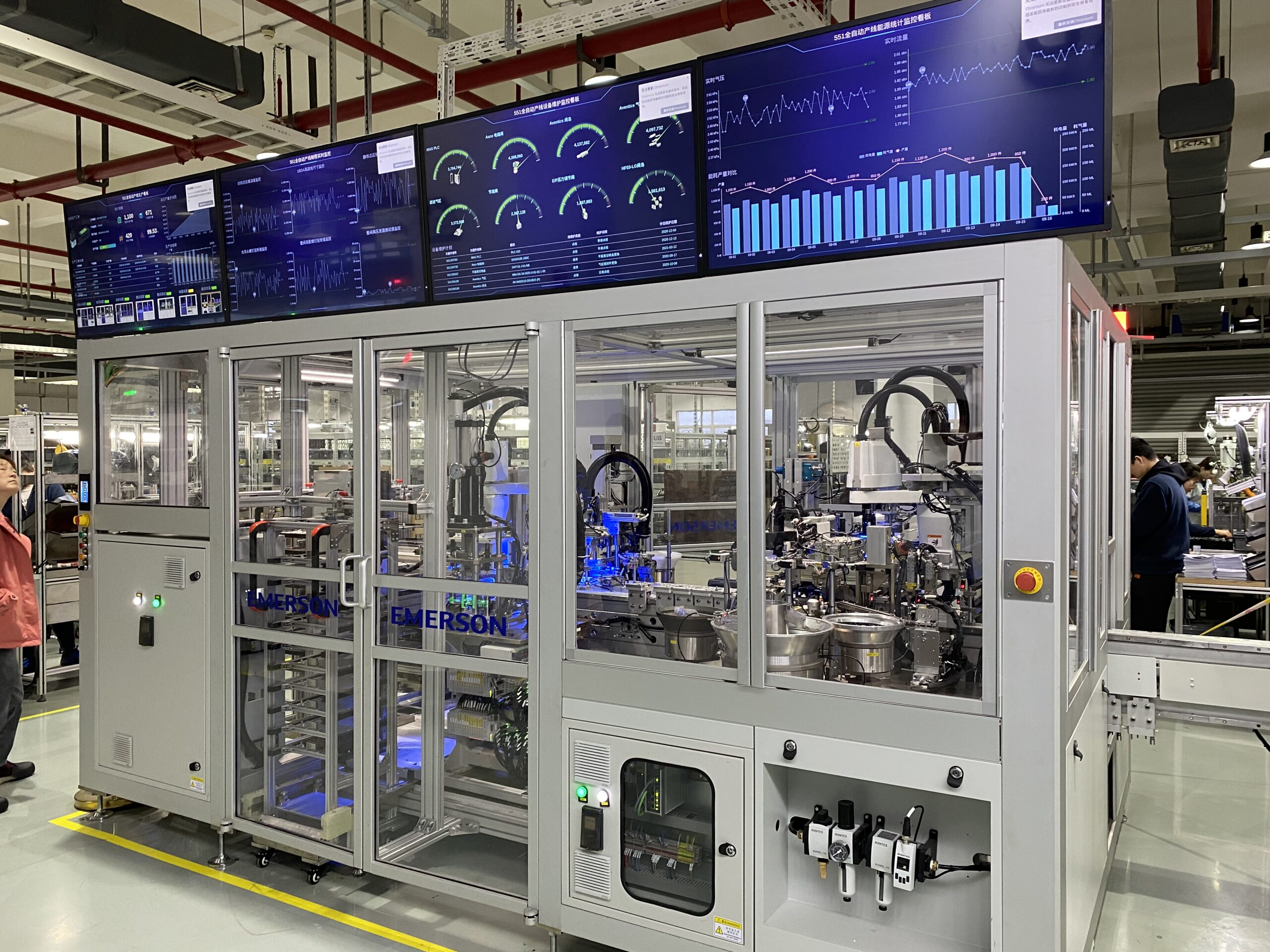
Emerson offers a thoroughly integrated portfolio of hardware and software technologies to let engineers realize digital transformations of new and legacy equipment at every level — from edge-located field devices to control panels and control rooms … and even to the enterprise and cloud.
Nandy: Complex products require connected and secure devices. Microchip’s solutions support M2M security with secured boots, secured firmware upgrades, secured communications, and mutual authentication. Our solutions let users increase network availability and securely perform remote deployments.
Industrial-system robustness, reliability, and safety are also becoming more important than ever. In several applications, safety requirements are formalized and mandatory, while in others this is implemented to differentiate the product by making it safer and more reliable. Microchip’s functional-safety hardware, software, and documentation help engineers design highly robust and safety-compliant systems.
Paczkowski: Edge-enabled IPCs can serve as fog environments through which developers can rapidly deploy analytics and other advanced computing. Another option is a hybrid platform using an edge controller having deterministic PLC-type realtime control and general-purpose PC-type computing resources.
In fact, fog computing is a great steppingstone for locally developing solutions before scaling them to the cloud. In addition, there are many data-intensive digital transformation applications for which data transport costs can be significant. Here, a fog-computing solution is preferred for aggregating and preprocessing data prior to moving it in bulk to other enterprise assets.
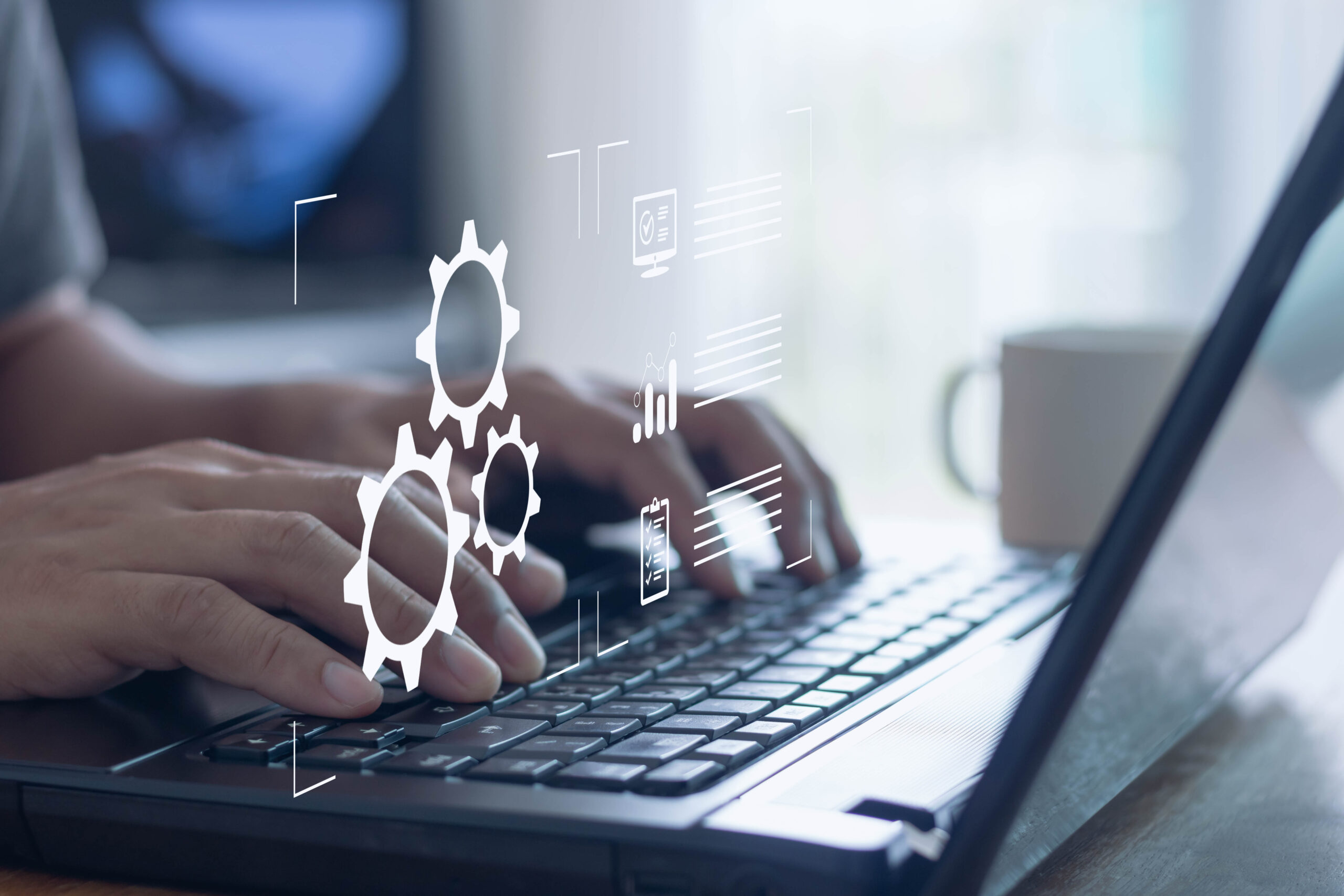
Process workflow optimization image: Dreamstime • Tsingha25
Beginning a digital transformation
The most successful digital transformations engage every employee at the organization from management to seasonal plant personnel and continually evolve in response to quantified results and personnel feedback.
But whether instituted by a team internal to an organization or hired consultants, digital-transformation initiatives can face pushback at established companies — especially from naturally skeptical engineers. Exacerbating this issue is the way in which products supporting DXs are inherently reliant on the adoption of complementary elements to work. That means a given smart sensor (to give on example) can require adoption and integration of dozens of other disparate components and elements to support a grander initiative. In some cases, the suppliers of such components and tools eschew marketing that touts IoT functions for communications that instead address the specific business concerns of an industry.
Suppliers best equipped to support digital transformations of business models are those with long histories in engineering and manufacturing and extensive product lines with smart products and services leveraging data analytics. Though all organizations have mission-critical issues that (if solved) could mean business-model quantum leaps, those issues shouldn’t be tackled in nascent DX trials. Starting small on more manageable processes needing improvements is the wisest approach to an inaugural deployment.
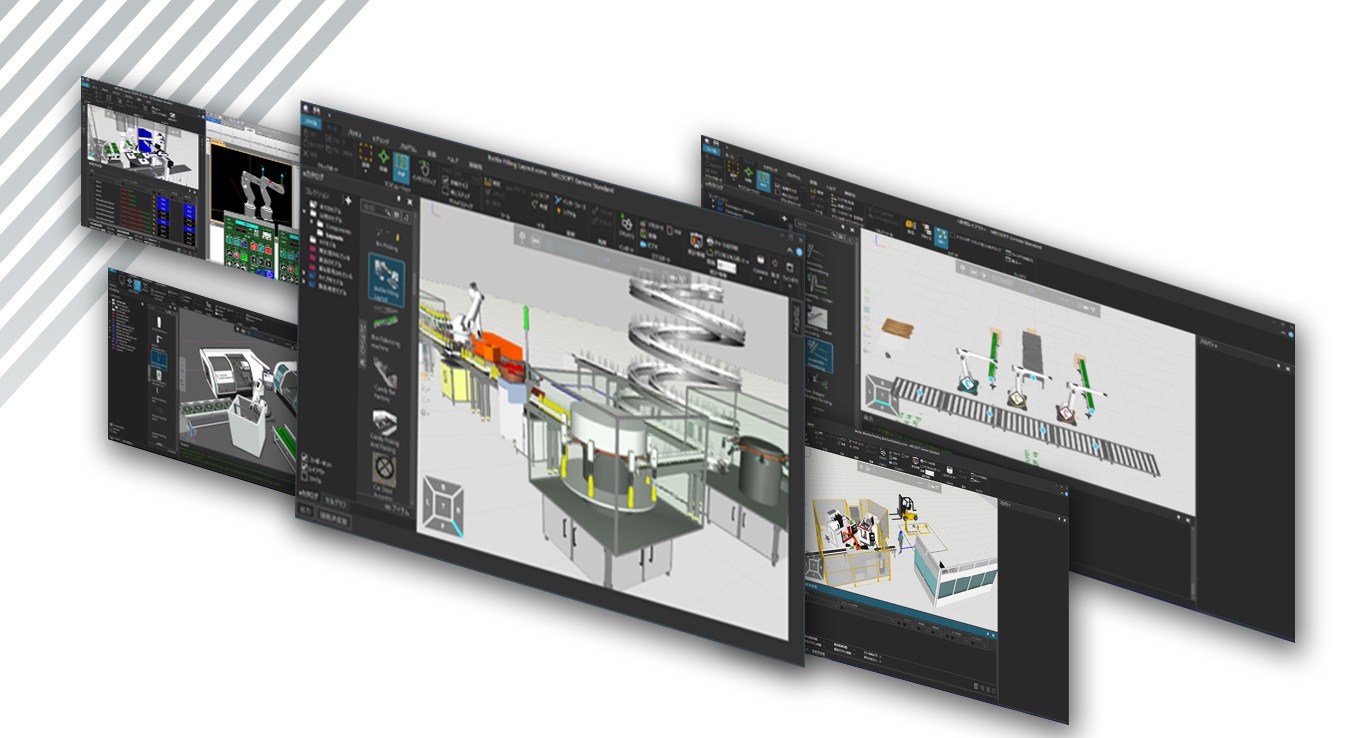
Mitsubishi Electric Automation, Inc. has released its MELSOFT Gemini 3D Simulator Software to allow users to expedite the design and construction of manufacturing projects as they introduce new automation components to their facility. By connecting to various software and factory devices, Gemini provides visualization, simulation, and the streamlining of work processes. Gemini operates using a PC-based 3D digital space and connects directly to factory devices without having to go through an OPC server. This enables 3D data to be updated in digital spaces approximately 12 times faster than OPC environments. As engineers use the software for their verification purposes, they can test and debug the automation logic for machines and systems, as well as check the operation of the planned production facility prior to construction.
The first step in a successful DX is to define lingering problems internal to a company or affecting the industry at hand as a whole. Despite the industries’ differences, common challenges are found in industrial automation, energy management, building automation, data centers, and public utilities. Those most familiar with the issues needing solutions are information technology (IT) personnel and those directly supporting operations and line-of-business services. They’re also the most likely to have connectivity wish lists — whether for:
• Automation functions (via device, control, machine, and cloud integration) or
• Data access and use so important to IIoT functionalities.
For the former, leading trends include the rise of edge computing (including the use of industrial gateways) as well as services that support cloud connectivity, Ethernet-based networks, wireless communications for industrial components, various forms of standardized protocols, open-source programming code, and unifying software environments to facilitate interoperability. For the latter, automated company data sharing along with advanced analytics and artificial intelligence (AI) are the IoT capabilities leading DX efforts. The connectivity-heavy nature of such DX implementations means that many organizations fund and support them through IT departments who must in return stay current with the IoT networking, data storage, and improvement programs the organization develops, deploys, or employs.
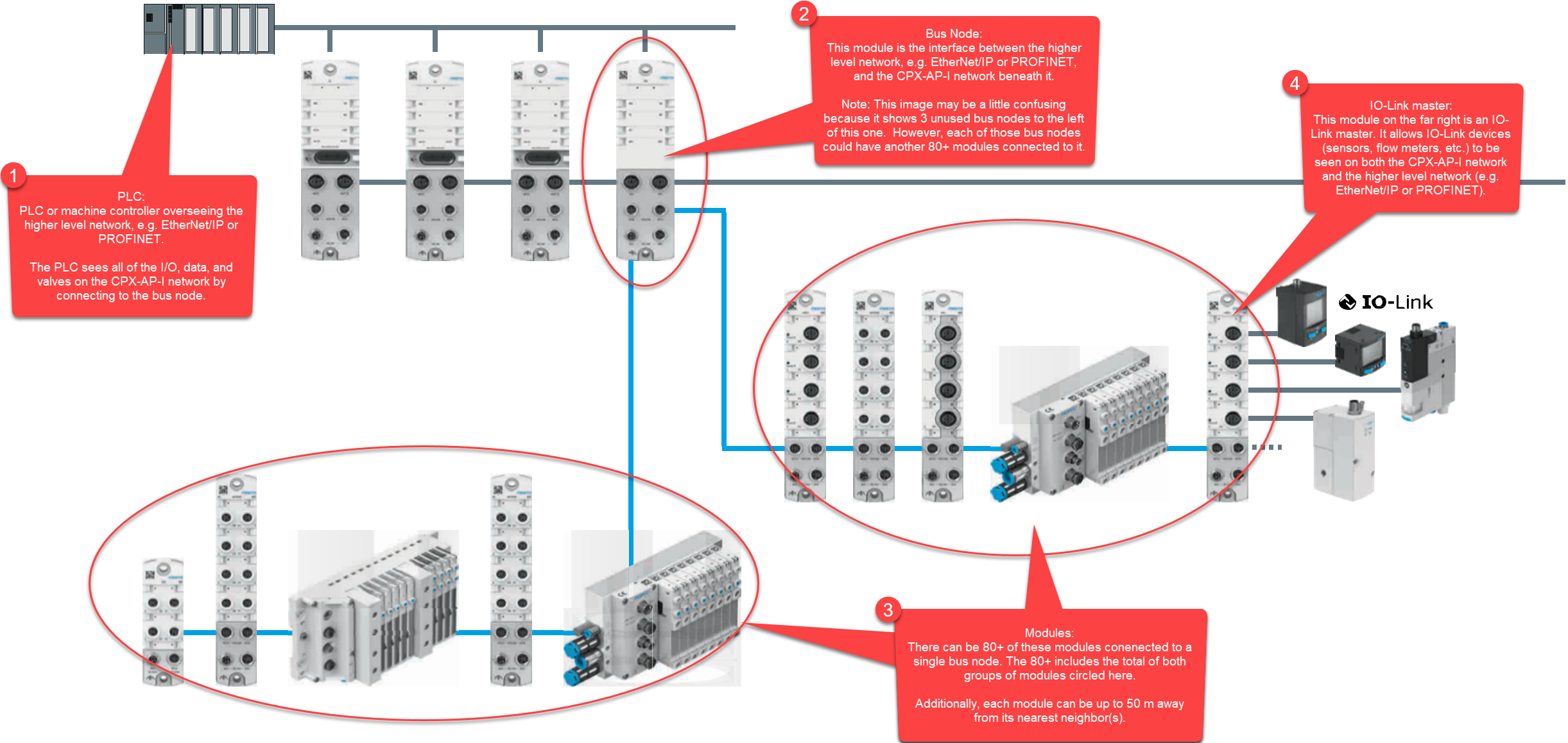
Compatible with AP and other standards, Festo CPX-AP-I systems ensure seamless communications. Decentralized I/O imparts advanced design capabilities.
Where organizations involve line-of-business teams in DX initiatives, they can often help solve challenges faced R&D, engineering, operations, maintenance, and corporate teams. Solving such operational issues ultimately benefits endusers and other external entities that interface with the organization.
What new offerings of yours leverage artificial intelligence (AI)?
Wollersheim: We recently introduced Property Intelligence — proprietary AI that can analyze any property or portfolio at scale. These insights help managers answer business-critical questions and dramatically reduce the time it takes to get hands-on analytics … and in many cases, generate previously unattainable insights. In fact, Airbnb recently leveraged Property Intelligence to analyze and verify a collection of Adapted-branded homes to ensure they meet accessibility standards for guests with mobility needs.
Eidelberg: We plan to soon offer two artificial intelligence (AI/ML) product lines — the RoboChair and the Exollent to give people assistive mobility. Both may run off three different controllers. A bang-bang on-off controller may suffice for elderly users needing help standing. Or a PID controller running a specific motion profile might help a patient in rehabilitation. Or a reinforcement-learning (RL) motion controller with hundreds of optimized neural-network parameters might drive autonomous functions to assist highly disabled patients. The latter will learn via simulation to optimize performance using a reward function — including the balancing of conflicting safety, speed, power, and comfort parameters. The system will track the environment via gyrometer, position, and force sensors and drive autonomous actuators. Once RL simulations achieve their maximum reward, the neural-network control parameters will be deployed in a real system and run as a model-free controller.
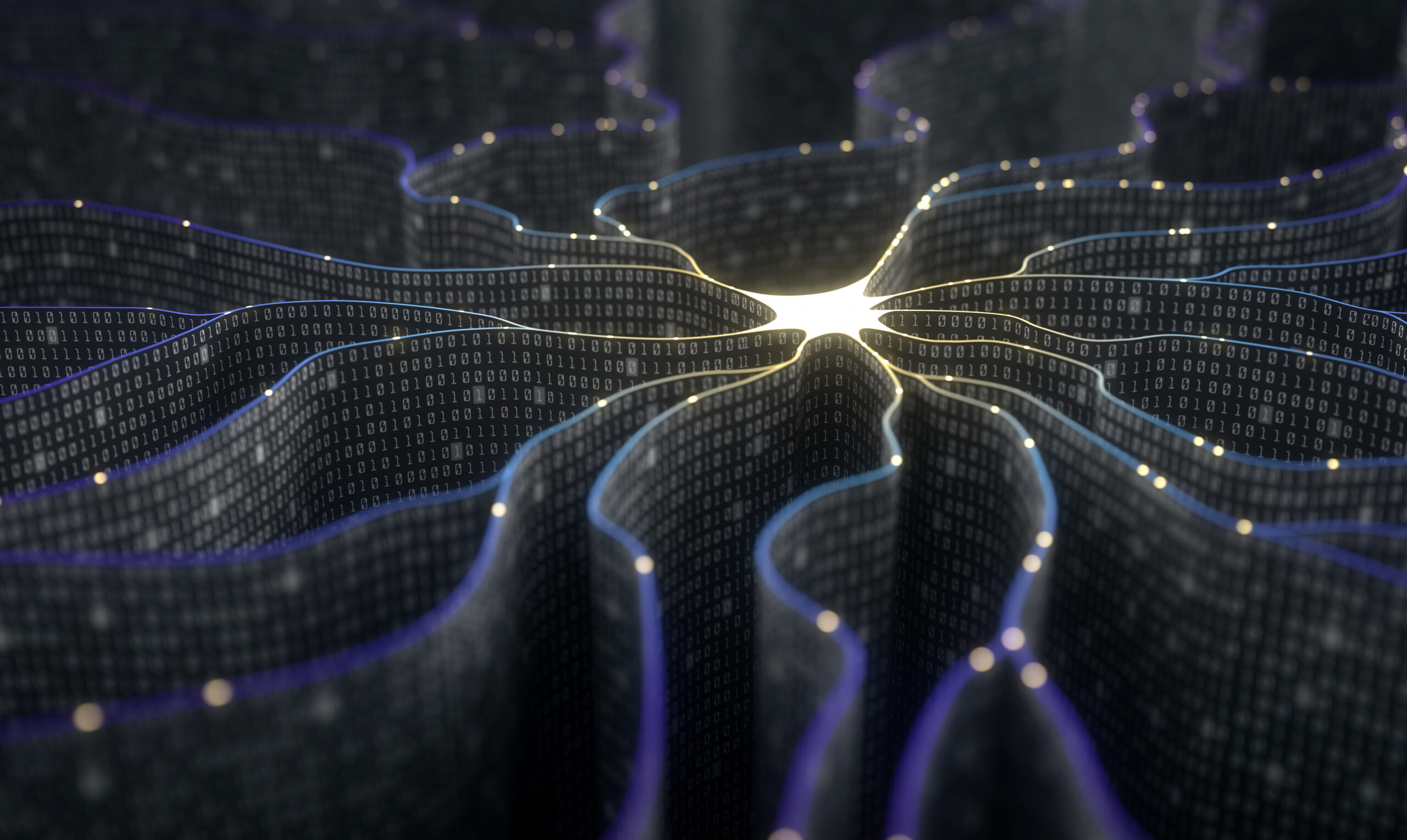
Some industrial automation-targeted AI can analyze plants an machines to help managers answer business-critical questions and minimize how long it takes to procure useful analytics. Image: AdobeStock
Leveraging digital twins for DX initiatives
The use of so-called digital twins (or virtual or digital replicas) is core to the digital transformation (DX) of industrial automation. These digital twins — essentially software-based copies of real-world machines, processes, systems, operating environments, and products — are exceptionally accurate. That’s because digital twins are based on massive amounts of data collected from previous designs’ performance; feedback from sensors on installed equipment; and advanced replication coding. The result are models that let organizations explore, control, and optimize designs in efficient and cost-effective ways.
In addition, digital twins support communications between interconnected IIoT systems. That’s because these digital models tend to standardize the programmatical descriptions of component parameters and interrelated definitions. Ultimately, that in turn lets operations output product with just-in-time approaches in smaller batch sizes. Digital definitions of interconnected machine modules and controls also make quick changeovers and reconfigurations (say, to temporarily output a specialty product) more feasible.
What systems as a service (SaaS) and digital-transformation (DX) solutions do you offer?
Gottlieb: Kollmorgen recently signed a go-to-market agreement with MTEK to sell the MBrain solution — a no-code paperless smart-manufacturing platform. MBrain handles enterprise complexity at scale, including work instructions for line setups. The latter can be useful to machine builders using motion control or analyzing data captured during manufacturing across any facet. MBrain users realize vast improvements … even to 70% value-stream throughput increases in addition to hard savings on paper as well as training and onboarding. The MBrain solution naturally fuses into Microsoft Azure cloud-based configurations, on-premises configurations, or hybrid configurations. In short, MBrain has been instrumental in helping design engineers boost product quality, run rates, and human-resources deployment.
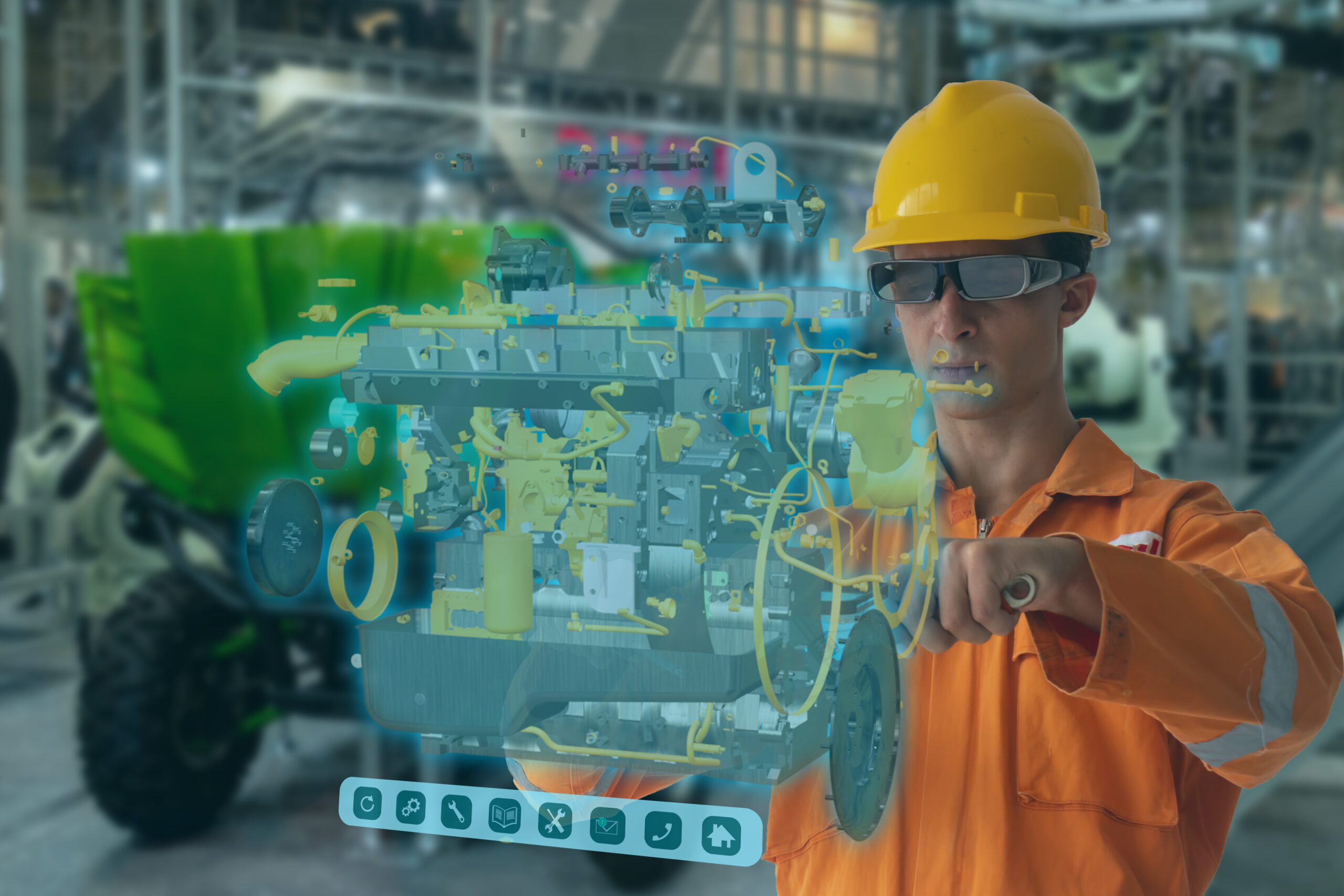
Use of digital twins is a core approach in the digital transformation of industrial automation. Image: Ekkasit919
Thompson: We’re leading the digital transformation of facilities management. With our scanning and software, operations can capture buildings in photorealistic 3D for ROI and reduced facility design, management, and maintenance costs. A Matterport digital twin gives immersive access to the physical context of a facility, machine, or area. Recently, John Deere employed our Digital Twin Platform and 3D capture technology for remote management of more than 60 facilities across the globe.
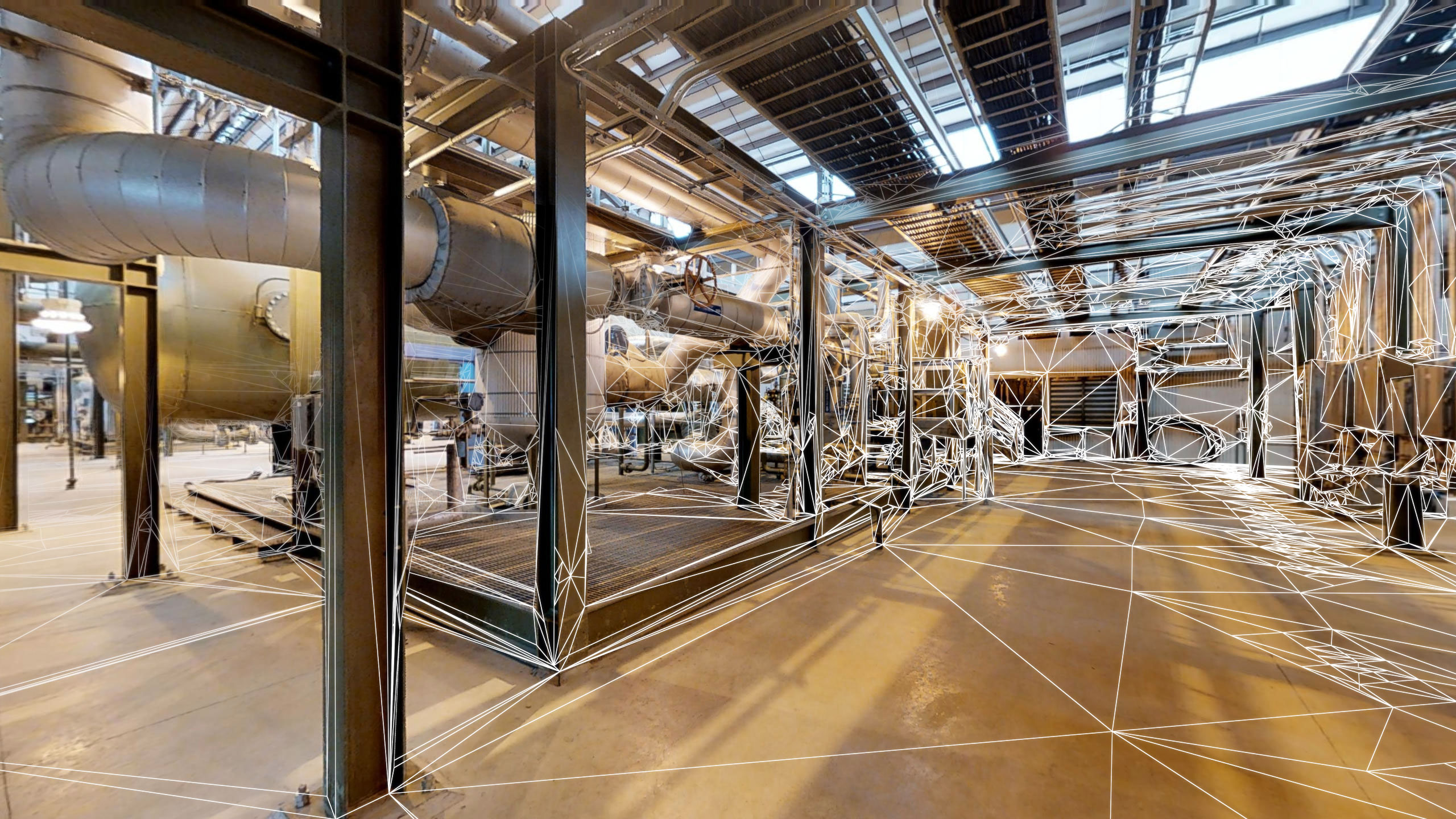
This is a Matterport 3D wireframe digital twin of a built production space.
Scott: Fuuz by MFGx delivers platform as a service (xPaaS) capabilities for companies with complex processes. More specifically, Fuuz xPaaS provides prebuilt industrial apps and pro-code to no-code app-development tools that consolidate technologies into cohesive user experiences that are fast and easy to learn. With rapid deployment of standalone apps and connections to existing software, businesses can capture data. Plus they can unite processes, people, and machines in one ecosystem. In fact, the software integrates and augments all open data sources to let companies leverage current solutions, industrial equipment, and operating systems … with integration capabilities that let design engineers connect to devices within their enterprise as well as other databases and sites.
- One health-snack producer needed a new point-of-sale system, as their current system (among other things) couldn’t integrate data into their ERP. Fuuz helped the company scale inventory management, transportation, and shipping — plus capture activity data across multiple e-commerce environments and dropship programs. Now, data is automatically processed to invoice into their ERP — and the company’s inventory management, accounts payable automations, and 3PL shipping partner integrations feature upgraded functionalities.
- One injection-molding and formed-fiber designer and manufacturer needed to compile metrics and KPIs in an accurate format. Here, Fuuz enabled machine integration with the company’s cloud ERP provider; automated print jobs; and simplified data capture. Now, machine-data capture happens in realtime so associates can focus on product quality and production targets.
- One semiconductor maker with multiple stamping and heat-treating operations integrated Fuuz into its cloud ERP to simplify the work of its IT experts on productivity-boosting custom applications.
Specific digital-transformation benefit examples
The most effective DX implementations are those that are operable across business systems (especially as the IIoT continually evolves) while prioritizing cybersecurity protections. Component suppliers and solution vendors most capable of supporting machine builders and plants with DX efforts are those connected to comprehensive partner networks that standardize on certain protocols, software tools, and design ecosystems. These in turn allow assembly of various vendors’ technology elements to build customized end-to-end IoT solutions … in some cases, complete with continued support from licensed integrators or digital services designed for a given industry.
Benefits to OEMs and facilities that adopt DX approaches include the ability to satisfy 21st-centuty demand for customized end products (from foods to electronics to homes) as connected companies are the nimblest and most capable of flexible production routines.
In some cases, DX enables new business models that turn data (processed by analytics or AI) into salable products. This can take the form of subscription-based or value-add machine-monitoring products. The benefit to end user is the ability to remotely fix problems without having to wait for a technician to fly or drive to the facility.
Digital transformation solutions are nearly always scalable, allowing OEMs and endusers to experiment with a new system in one location and then leverage what’s designed and learned in more places later — often with significant savings from the economy of scale.
DX also frees automated facilities from classical single-file production lines that are limited by inherent inefficiencies and (especially in manufacturing) workforce shortages. AI especially complements personnel functions and enables more nuanced factory flows — freeing humans from data analysis and assessing situational contexts to serve as the so-called missing middle and inform (or sometimes even trigger) real-world actions.
Embracing supplier partnerships
In some cases, long-term partnerships with industrial suppliers can help vendors and endusers keep current in their DX efforts. Such arrangements deemphasize product-centric businesses and emphasize support services and operating platforms. What’s more, step-by-step design approaches (like production approaches) must yield to more flexible design and prototyping approaches. Here, the typical trial-error iterative process involving mostly siloed in-house design teams is replaced by open and holistic design work.
Supporting such approaches are so-called design ecosystems and platforms from industrial suppliers. To complete such offerings, suppliers often partner with professional services companies specializing in digital services that are applicable to industrial automation. The result is an array of throughput analysis, predictive maintenance, asset tracking, customer service, and energy optimization tools targeted to specific automation operations. The largest machine builders with long-term relationships with suppliers can expect help in analyzing business problems and tailor-made DX solutions.
Read the rest of our experts’ insights in Part 1 of this series by clicking here.
You may also like:
Filed Under: NEWS • PROFILES • EDITORIALS, DIGITAL TRANSFORMATION (DX), Trends


